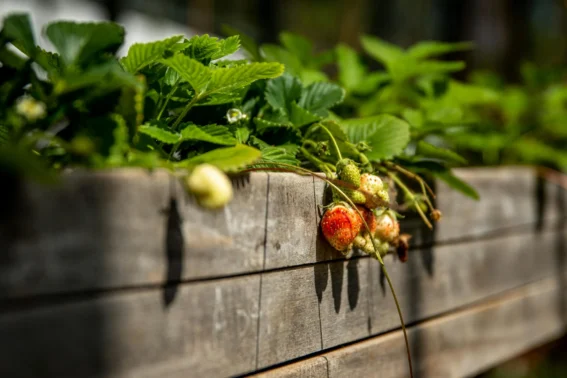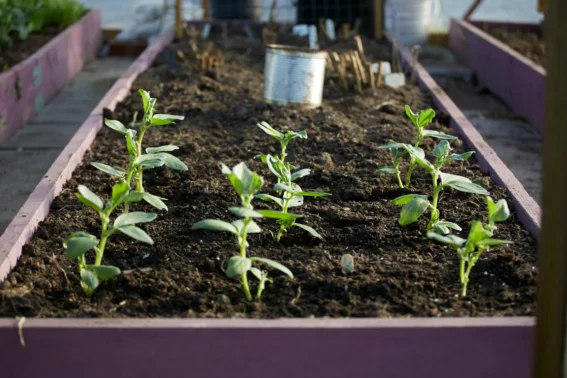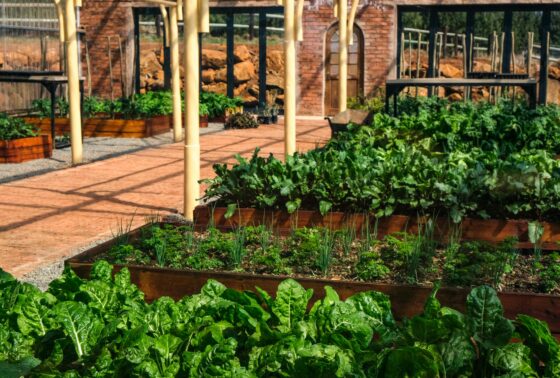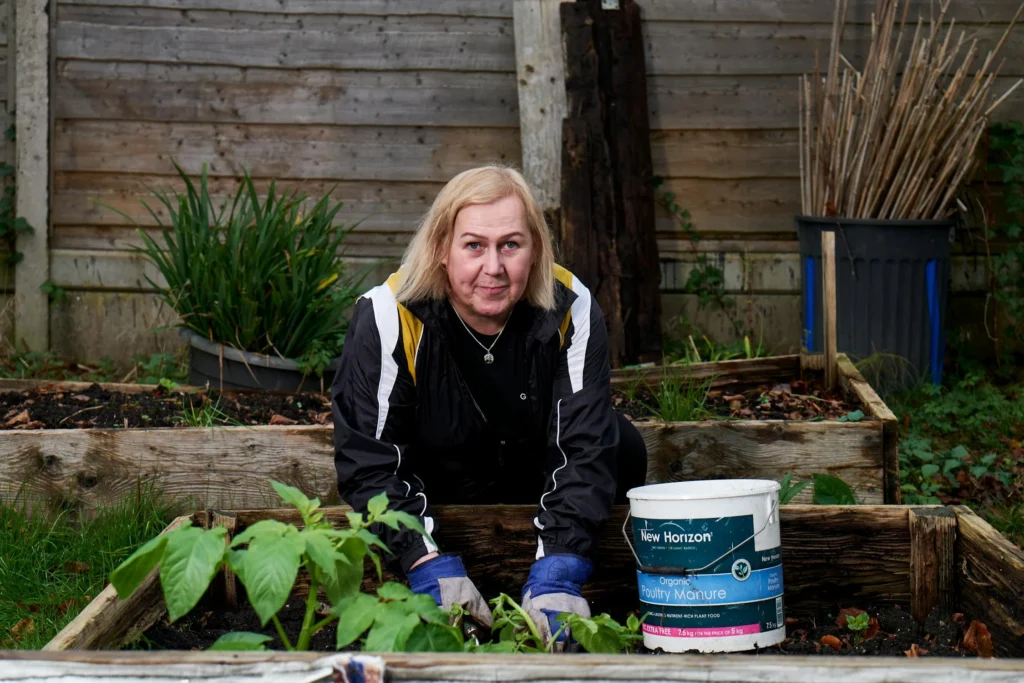Building a raised garden bed is a great way to grow your own vegetables, herbs, or flowers with minimal hassle. It’s simple, affordable, and can be a beautiful addition to your yard or garden. Whether you’re a beginner gardener or a seasoned pro, this guide will walk you through the process of constructing a raised garden bed from scratch, with tips and ideas for keeping costs low.
What You’ll Need to Build Your Raised Garden Bed
Before you start building your raised garden bed, it’s important to gather the necessary materials and tools. Here’s a quick checklist of what you’ll need:

Materials:
- 4 cedar boards (2″x6″x8′) for a 4’ x 4’ raised bed (feel free to adjust based on your desired size)
- 4 framing angles (10” long)
- Hex screws (1/4″x2-1/2″)
- Washers and nuts (1/4″ size)
- Weed barrier cloth (optional, for extra protection)
Tools:
- Saw (or ask the store to cut the wood for you)
- Hand drill with a 1/4″ drill bit
- Measuring tape and pencil
- Bolt tightener
Step-by-Step Guide: How to Build A Raised Garden Bed
1. Pick the Right Spot
The first step in building your raised garden bed is choosing a good location. Ideally, you want to pick a spot that gets at least 6-8 hours of sunlight every day. Also, make sure the ground is relatively level to keep the bed stable and prevent water from draining unevenly.
2. Measure and Prepare Your Materials
Once you’ve chosen your spot, it’s time to measure and cut your materials. For a basic 4’x4’ raised garden bed, you’ll need to cut your cedar boards into 4 equal pieces, each 4 feet long. If you’d like a different size, just adjust the length of the boards accordingly.
If you’re not comfortable cutting the wood yourself, many hardware stores will cut it for you to your exact measurements. It’s an easy way to save time!
3. Assemble the Frame
Start by assembling the sides of your raised garden bed. Use your framing angles to secure the corners of the frame. Line up two boards, drill holes in the appropriate spots, and fasten them using hex screws, washers, and nuts.
Repeat this step until all four sides are assembled, forming a square or rectangular frame.
4. Optional: Add a Bottom Layer
While not essential, adding a bottom layer to your raised bed can help prevent weeds and protect the wood from the soil. You can use cardboard, plastic, or even hardware cloth to create this layer. It’s especially helpful if you’re dealing with weeds or ground-dwelling critters.
5. Fill Your Raised Bed with Soil
Once the frame is complete, it’s time to fill your bed with soil. A good mix of topsoil, compost, and organic matter will give your plants the best chance to thrive. Be sure to choose a soil that drains well to avoid waterlogging. You want the soil to be rich in nutrients but also light enough to allow roots to grow easily.

6. Start Planting!
Now comes the fun part – planting! You can grow all kinds of plants in your raised bed, from vegetables like tomatoes and lettuce to herbs like basil and mint. Be sure to plant according to your climate and the amount of sunlight your bed receives.
Customizing Your Raised Garden Bed
If you want to make your raised garden bed even more special, there are plenty of ways to customize it:
- Add Trim: For a more polished look, consider adding trim around the top or bottom edges of your raised bed.
- Different Sizes: You can adjust the dimensions of your raised garden bed. For example, make it deeper for root vegetables or smaller if you’re working with limited space.
FAQs About How to Build A Raised Garden Bed
What materials are best for building a raised garden bed?
The best materials for building a raised garden bed are durable, untreated wood like cedar or redwood. These woods are naturally resistant to rot and pests, making them ideal for outdoor use. Avoid pressure-treated wood, as the chemicals used can leach into the soil and affect plant growth.
How deep should a raised garden bed be?
The depth of your raised garden bed depends on the plants you plan to grow. A standard depth is around 12 inches, which is perfect for most vegetables and herbs. If you plan to grow root crops like carrots or potatoes, you might want to make the bed at least 18 inches deep to give the roots plenty of room to grow.
Do I need to line the bottom of my raised garden bed?
Lining the bottom of your raised garden bed is optional but can help with weed prevention and soil retention. If you’re concerned about weeds or grass growing into the bed, use a layer of cardboard or weed barrier cloth at the bottom before adding soil.
Can I use cheaper wood for a raised garden bed?
You can use cheaper wood, like pine, but it won’t last as long as cedar or redwood. Pine tends to break down more quickly, which means you’ll need to replace it sooner. However, if you’re on a budget, pine is still a good option for a short-term solution.
How much soil do I need for a raised garden bed?
The amount of soil you need will depend on the size of your raised garden bed. For a 4’x4’x1’ bed, you’ll need about 1 cubic yard of soil. To calculate how much soil you’ll need for different bed sizes, you can use an online soil calculator or simply measure the volume of your bed and purchase accordingly.
FAQs About Sunready Landscaping
What services does Sunready Landscaping offer?
Sunready Landscaping offers a variety of landscaping services, including garden design, lawn maintenance, seasonal clean-ups, hardscaping, and custom landscape installations. We focus on creating beautiful, functional outdoor spaces that suit your needs and preferences.
Can Sunready Landscaping help me build a raised garden bed?
Yes! Sunready Landscaping specializes in landscaping and garden design, and we can help you build a raised garden bed that fits your yard and garden style. We can also assist with soil selection, plant recommendations, and maintenance for your new raised bed.

How do I get a quote for my landscaping project?
You can get a quote from Sunready Landscaping by reaching out to us via phone or email. We offer free consultations and will work with you to understand your landscaping needs before providing a detailed estimate.
Does Sunready Landscaping offer maintenance services?
Yes, we offer ongoing maintenance services to ensure your garden and landscape stay healthy and beautiful year-round. Whether you need regular lawn care, seasonal plantings, or upkeep for your raised garden bed, we’ve got you covered.
Building a raised garden bed is a simple and rewarding project that can enhance your outdoor space. Whether you’re looking to grow your own vegetables or just want to add some greenery to your yard, this guide has given you the basics to get started. Remember, it’s all about picking the right materials, measuring carefully, and having fun with the planting process.
If you’re looking for expert help in building and maintaining your raised garden bed, Sunready Landscaping is here to assist. From design to installation and ongoing care, we’re dedicated to helping you create a beautiful and functional garden.
